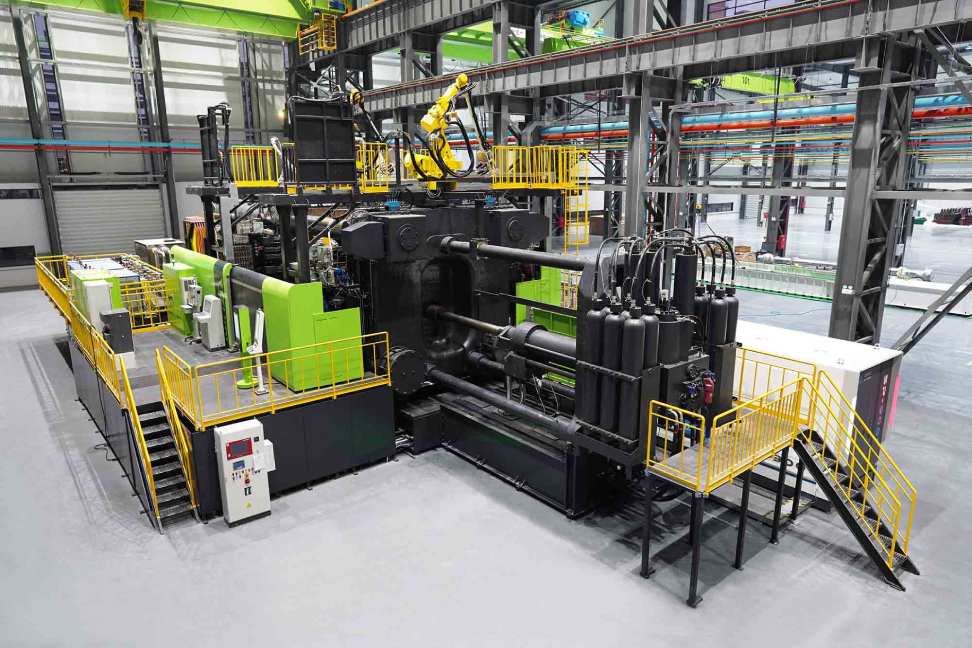The manufacturing industry in China is experiencing a large-scale transformation powered by automation and Industry 4.0 principles. This transition can be observed most clearly in injection molding as well as aluminum die casting – two processes that have historically relied heavily on manual labor. The article examines how these industries are being reshaped in China through automation, what benefits it brings about; and what considerations need to be taken into account by companies operating within this changing environment.
The Rise Of Robots: Centre-Stage Takes Automation
Automation increasingly takes repetitive tasks performed during injection mold China and die casting. These include but are not limited to:
Material handling: robots replace human workers for loading raw materials; transferring parts between stations or unloading finished products.
Machine tending: automated systems can monitor machine parameters as well as adjust them whenever necessary thus ensuring uniform quality throughout production runs without much intervention from operators.
Quality control: Automated vision systems inspect parts for defects more accurately and quickly than any manual inspection could allow for.
Finishing & Packaging stage: Robots do things like trimming parts; applying surface finishes or packaging finished goods among others.
Advantages Of Automation In China’s Manufacturing Sector
There are several benefits associated with adopting automation during injection molding and die casting in China:
Enhanced Efficiency And Productivity: Reductions in cycle times achieved through automation alone significantly increase output while minimizing downtimes thereby enabling round-the-clock operation which leads to high levels of productivity.
Better Quality Control: Consistent quality control provided by automated systems also improves product consistency since scrap rates reduce due reliable quality controls established over time by such kinds of machines.
Cost Saving On Labour: Although initial capital outlay required to set up an automated system may seem high at first glance; prolonged usage eventually saves money spent on salaries because less staff will be needed especially when coupled with other factors such tightening Chinese labor market safety concerns etc.
Worker Safety Improvement: Automation eliminates the need for workers’ presence within dangerous environments that involve heat or molten substances.
Data Driven Production: This is where automated systems collect useful production data thus enabling monitoring processes in real time; predictive maintenance based on historical data analysis as well decision making supported by facts rather than guesswork during production planning stages etc.
Challenges And Considerations
In as much as there are numerous benefits associated with automation; there also exist certain challenges which include but not limited to:
Initial Cost: Small scale manufacturers may find it hard to meet initial costs involved in setting up robotic systems because they require significant amounts of money upfront.
Technical Know-How : A highly skilled workforce knowledgeable about robotics and other automation technologies needs to be employed so that these machines can be integrated maintained operated effectively over long periods .
Flexibility Issues: Rapid design changes or small production runs may pose problems for highly automated lines that lack flexibility needed accommodate such variations hence leading decreased adaptability levels within them overtime than non-automated counterparts would exhibit under similar conditions
Navigating The Automation Landscape
When thinking about automating injection molding and die casting processes in China, companies must consider following factors:
Production Volume: Companies must determine whether their production volume justifies upfront investment into an automated system.
Part Complexity: It should be analyzed what kind of parts being manufactured have high degree of complexity so as see if automation would work efficiently with them or otherwise fail miserably
Labour Availability : The availability cheap labor over manual cost savings achieved through using machines such robots should always taken account when considering whether automate given task force e.g tightening Chinese labor market
Scalability Requirements: Automation solutions chosen ought to have ability scaled up according to changing demands during lifetime undertaken projects under consideration at any given point time.
Long-Term Perspective: Investments made towards implementing automation should always done from standpoint realizing potential future efficiencies gains arising thereof together associated cost savings etc over longer periods .
The Future Of Manufacturing: Collaboration And Human-Machine Integration
The future of injection molding and die casting lies in China with collaboration between humans and machines. Skilled labor will still be needed for:
Programming robots.
- Overseeing complex production processes.
- Making critical decisions based on data analysis.
- Ensuring quality control as well product integrity among others.
Through effective integration of automation systems together human expertise; efficiency levels could increase exponentially within China’s manufacturing sector while attaining higher standards globally
Automation is causing a major transformation in China’s industries that deal with injection molding and Aluminum die casting manufacturers. Even though there are several hurdles, the advantages of heightened efficiency, better quality management system and increased worker safety cannot be ignored. Firms should identify their unique requirements and take a deliberate step if they want to succeed through this period of change by using machines. They will also help as well as advance China’s current manufacturing revolution provided organizations think deeply about what they require from automation and approach it strategically within such an ever-changing environment around them.
Summary
This text investigates the effects of automation on injection molding and aluminum die casting in China. It explains that robots have started performing repetitive jobs such as material handling, machine tending and quality control, which has led to higher efficiency levels, better quality outputs and less dependence on human workforce. The use of automated systems has increased productivity as well as worker safety while enabling data driven production.
However, there are also some challenges which include initial costs, investments required for setting up these machines; technical skills needed to operate them optimally and flexibility issues especially when it comes to rapid design changes or small production runs. Companies should therefore take into account factors such as their production volumes; complexity of parts being produced; availability of labour among others while making decisions regarding adoption of automation solutions within this sector. According to experts’ opinions shared here, it is believed that future success in these areas will be achieved through collaboration between humans & machines where skilled personnel play vital roles in programming them, supervising over their work outputs & making necessary adjustments based on information collected during various stages of the process.
FAQs
Q: How is automation changing injection molding and die casting in China?
A: Robots are doing repetitive tasks thereby increasing efficiency levels, improving quality control measures & reducing reliance on manual labor.
Q: What are the benefits of automation in these industries?
A: The advantages include higher productivity rates; consistent product qualities; lower wage bills due to reduced need for workers’ presence at every stage of production process which also leads to improved employee safety records plus insights derived from using data throughout manufacturing cycle.
Q: Are there any challenges to consider with automation?
A: Some challenges may involve upfront financial outlay required for purchasing/installing equipment involved as well gaining appropriate knowledge/skills necessary manage them effectively within given context coupled with continuous design alterations arising from customers preferences particularly for low volume customised items .
Q: What factors should companies consider before adopting automation?
A: Among important factors to consider before adopting automation solutions in any given company include production volume, part complexity, labor availability, scalability needs and long-term vision.
Q: How will humans and machines work together in the future of these industries?A: Humans will need to play a role of programming robots; monitoring their operations; making data driven decisions regarding settings adjustments as well ensuring quality controls are met.
Read Also
- What Are The Types Of Backlinks In SEO?
- How To Build Backlinks Using Guest Posting?
- What Are High-Quality Backlinks And Low-Quality Backlinks?




